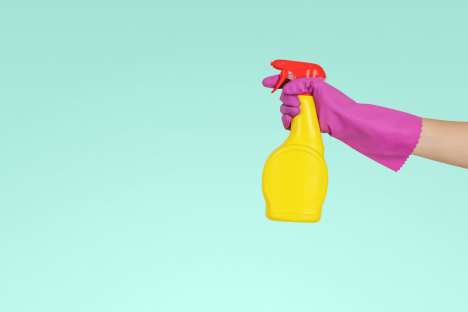What is an inner world if not a beautiful house each of us has in our tiny universes? Our emotions, needs, values â all of these are more complex than any of the architectural masterpieces. Early in our lives, we learn that our home should be regularly cleaned: washing the floor, dusting the shelves, getting the trash out, and so on. Then why not give our minds the same grace?
Emotional hygiene is a set of skills each of us needs to have to keep our inner houses tidy and safe. When we forget to care about our feelings, clutter and dust can make us miserable. We will talk about how to learn vital emotional hygiene skills and make them feel like “us.”;;
What Is Emotional Hygiene?
The phrase might sound strange, so let’s look at what it means. Emotional hygiene is the practice of taking care of your emotional well-being. Quite as we brush our teeth and wash our hair every day, we can do the same for our feelings.
Popularized by Guy Winch, this concept suggests that our minds deserve as much attention and focus as our bodies. We tend to ignore our mental state because it seems inconsequential, but this blindness can lead to a mental and emotional ordeal. Emotional hygiene can help us deal with anxiety, depression, procrastination , and other conditions that can become stronger as our stressors start to pile up.
Here’s what emotional hygiene means:
- Recognizing our feelings and when we are hurt.
- Leaving unhealthy and unpleasant tendencies (self-criticism, rumination) behind
- Creating space to process our emotions
- Developing daily habits and strategies to support emotional wellness.
Treat this as self-care that ensures your resilience and long-term happiness.
Tools for Emotional Hygiene
While there are some quick patches that can hold our emotions in place for a bit, the real key to opening up to our needs is consistent effort that proves useful through daily habits.
Self-Awareness: Peeking Inside
Think of it as quick check-in or monitoring â it allows you to identify the first signs of emotional hurt and address them before they escalate.
1. Regular daily check-ins. Pause 1â2 times a day and ask yourself:
“What am I feeling right now?”;;
“Where is this emotion showing up in my body?”;;
“What might be causing it?”;;
These are small things that will take less than a minute. As you try them more, this process will become more automatic.
2. Name the feeling. When we put our emotion into a certain word, it stops affecting us so much. We suddenly realize that it’s just sadness, or annoyance, or boredom, not something scary.
3. Keep a feeling journal. Write down emotional highs/lows at the end of each day. Keep it simple because overcomplicating will delay the process. Track the patterns: Are you more irritated in the mornings? When hungry? When interacting with someone in particular?

Relaxed Mind â Less Emotional Clutter
Our thinking is linked to our feelings; unhelpful thoughts can turn us into an emotional mess if we don’t have reliable coping strategies to keep them in check.
1. Master reframing. Reframing is turning our unpleasant and often damaging thoughts into something more objective. It can be difficult to learn because the path from thought to emotion is very short. However, here’s how you can slowly, gradually make it easier: When in a stressful or unpleasant situation, listen to yourself. Are there some thoughts that seem a bit out of place? They are often radical and represent the world in black and white.
Once you identify it, it’s time to start your Operation Reframing. Challenge the thought. Are you misinterpreting the situation and your abilities? Try to find a more rational thought. For example, instead of “I failed, I’m hopeless,”;; try “I struggled, but I’m learning.”;;
2. Take a break. Overthinking leads to anxiety and frustration, making even the most emotionally mature people emotionally tense. Do mental detox: spend a day solving nothing, go for a 30-minute walk, or hide your phone and don’t stare at your screen. What soothes you instead of straining more?
3. Practice brain dump. If you are an overthinker, take a journal and write everything you are thinking of. There is no need for a specific structure; just let it all fall onto the page. It will free up space in your mind and stop you from being mentally busy.
Feel to Heal
Essentially, no matter what you do, the healthiest third step in your emotional hygiene routine is letting yourself experience the emotion. We know it might be unpleasant, but it’s what stops you from healing. Why let it limit you?
1. Find a safe expression. Don’t stifle your emotions. Instead, find a satisfying but safe method to express it. Angry? Hit a pillow or tear the paper up. Cry if you want. Go somewhere far and scream (or, again, that poor pillow).
2. Focus on the emotion. Give yourself five minutes to sit with it without trying to hide. Pick a safe and quiet spot and acknowledge the feeling after taking several slow breaths. It will be uncomfortable, especially if you’re among the people who tend to ignore their emotional needs, but it will have its result.
3. Use breathing to relax your body. When we are stressed, our breathing often gets quick, which reinforces the emotion. Instead, the 4-7-8 breathing technique. Inhale for 4 seconds, hold your breath for 7, exhale for 8.
Emotions Have a Purpose
We deserve to care for our emotions â we aren’t robots and function in all shades and colors. Experiment with the different practices and activities to find something that meets your unique needs. Go for simple, fun, and short activities that you can sustain over a long time, and soon, it will come naturally to you. It’s a joy to cherish the deep well of our feelings, which, in turn, will nourish us.








